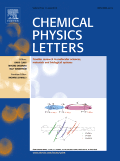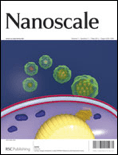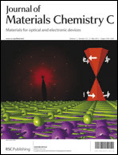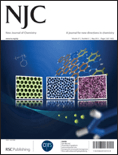
Nanosystems-Physics Chemistry Mathematics
Scope & Guideline
Advancing the Frontiers of Nanosystems Science
Introduction
Aims and Scopes
- Nanostructured Materials:
Research on the synthesis, characterization, and application of nanostructured materials including nanoparticles, nanocomposites, and thin films, with a focus on their unique physical and chemical properties. - Quantum Systems and Dynamics:
Exploration of quantum phenomena in nanoscale systems, including quantum dynamics, quantum optics, and quantum information, with studies on quantum graphs and other mathematical models. - Photocatalysis and Environmental Applications:
Investigating the photocatalytic properties of nanomaterials for environmental remediation, such as dye degradation and hydrogen evolution, highlighting sustainable and green chemistry practices. - Electrochemical Applications:
Development and application of nanomaterials in electrochemistry, including supercapacitors, batteries, and sensors, focusing on enhancing performance through novel nanostructures. - Mathematical Modeling and Computational Studies:
Utilization of advanced mathematical models and computational techniques to understand the behavior of nanosystems, including simulations of physical processes and theoretical investigations. - Magnetic Nanomaterials:
Research on the properties and applications of magnetic nanoparticles, including their synthesis, characterization, and potential uses in data storage, biomedical applications, and energy conversion.
Trending and Emerging
- Hybrid and Composite Nanostructures:
Research on hybrid materials that combine different types of nanostructures (e.g., metal-organic frameworks, core-shell structures) is gaining traction due to their enhanced properties and applications across various fields. - Sustainable and Green Nanotechnology:
There is a growing emphasis on sustainable practices in nanomaterial synthesis and application, including the use of environmentally friendly methods and materials for energy conversion and environmental remediation. - Advanced Photonic Applications:
Emerging studies on the use of nanostructures in photonic applications, such as sensors, lasers, and quantum computing, reflect the increasing interest in integrating nanotechnology with photonics. - Biomedical Applications of Nanomaterials:
Research focusing on the application of nanomaterials in biomedicine, particularly for drug delivery, imaging, and therapeutic applications, is becoming a significant area of interest, highlighting the interdisciplinary nature of the field. - Machine Learning and AI in Nanotechnology:
The integration of machine learning and artificial intelligence in the design and analysis of nanomaterials is an emerging theme, showcasing the potential for data-driven approaches to accelerate discovery and innovation in nanotechnology.
Declining or Waning
- Classical Nanomaterials:
Research on traditional nanomaterials, such as basic metal and oxide nanoparticles, is becoming less frequent as the focus shifts towards more complex and hybrid nanostructures with multifunctional properties. - Basic Physical Theories:
Papers that primarily focus on classical physical theories without significant application to nanosystems or novel materials have seen a decline, as the journal emphasizes practical applications and interdisciplinary research. - Single-Function Nanomaterials:
Studies centered on the development of nanomaterials designed for a single, specific function (e.g., only for catalysis) are becoming less common, indicating a trend towards multifunctional materials that integrate multiple properties. - Theoretical Studies without Experimental Validation:
There is a noticeable decrease in purely theoretical studies that lack experimental validation or application, as the journal increasingly values work that bridges theory with practical experimentation.
Similar Journals

CHEMICAL PHYSICS LETTERS
Elevating Scientific Discourse in Chemical PhysicsCHEMICAL PHYSICS LETTERS, published by Elsevier, is a prestigious journal that has been at the forefront of advancing knowledge in the fields of physical and theoretical chemistry and physics since its inception in 1967. With an impressive impact factor reflective of its high-quality research output, this journal holds Q2 quartile rankings in both the Physical and Theoretical Chemistry and Physics and Astronomy categories for 2023. It is recognized as a key platform for disseminating groundbreaking findings, with Scopus rankings placing it within the top 76th and 66th percentiles in its respective categories. Researchers and professionals benefit from its insightful contributions and rigorous peer-review process, making it an essential resource for those engaged in cutting-edge chemical physics studies. Although the journal is not open access, it remains accessible through various institutional subscriptions, ensuring that a wide audience can explore its wealth of knowledge. Located in Amsterdam, Netherlands, the journal continues to drive innovation and collaboration across diverse scientific disciplines.

Nanoscale
Advancing the Frontiers of Nanoscience.Nanoscale is a premier academic journal published by the Royal Society of Chemistry, dedicated to advancing the field of nanoscience and nanotechnology. With both its ISSN (2040-3364) and E-ISSN (2040-3372) ensuring wide accessibility, the journal is renowned for its high-impact research contributions, reflected in its impressive 2023 Impact Factor and prestigious Q1 ranking in both Materials Science (Miscellaneous) and Nanoscience and Nanotechnology categories. Since its inception in 2009, Nanoscale has fostered a collaborative platform where leading researchers from around the globe share their innovative findings across a multitude of topics spanning from material synthesis to applications in nanotechnology. The journal not only serves as a valuable resource for professionals, researchers, and students but also actively engages the academic community in discussing emerging trends, thus shaping the future of nanoscience. Situated in the heart of the UK at Thomas Graham House, Science Park, Milton Rd, Cambridge CB4 0WF, Nanoscale remains a key publication for those looking to keep abreast of the latest breakthroughs in an ever-evolving field.

BMC Chemistry
Empowering Discoveries in the World of ChemistryBMC Chemistry, published by BMC, is a reputable open access journal that has made significant strides since its inception in 2019. Operating under e-ISSN 2661-801X, this journal is dedicated to advancing the field of general chemistry by promoting high-quality research across various sub-disciplines. Headquartered in the United Kingdom, BMC Chemistry boasts a commendable impact factor and is classified in Q2 within the prestigious field of Chemistry (miscellaneous) according to the 2023 category quartiles. The journal's Scopus ranking places it at #139 out of 408 in its category, highlighting its growing relevance and influence in the academic community, with a commendable 66th percentile standing. With a commitment to open access, BMC Chemistry ensures that groundbreaking discoveries and innovative research are available to a global audience, fostering collaboration and development in chemistry. Researchers, professionals, and students alike will find this journal to be an invaluable resource for disseminating knowledge and driving scientific advancement.

RESEARCH ON CHEMICAL INTERMEDIATES
Connecting Researchers to Transformative DiscoveriesRESEARCH ON CHEMICAL INTERMEDIATES, published by Springer, is a prestigious academic journal that has been contributing to the field of chemistry since 1984. With an ISSN of 0922-6168 and an E-ISSN of 1568-5675, this journal serves as a vital platform for the dissemination of innovative findings and research advancements related to chemical intermediates. Situated in the Netherlands, it has established a commendable reputation, currently ranked in the Q2 category for miscellaneous chemistry and positioned at #131/408 with a 68th percentile in the Scopus rankings. Though it does not operate under an open-access model, the journal plays a crucial role in connecting scientists, researchers, and practitioners to facilitate a better understanding of synthetic methods, characterizations, and applications of various chemical intermediates. Continually publishing high-quality research until its anticipated convergence in 2024, this journal is an essential resource for those looking to expand their knowledge and contribute to the vibrant community of chemical science.

Inorganics
Connecting Scholars through Inorganic InsightsInorganics is a vibrant, peer-reviewed Open Access journal dedicated to advancing the field of inorganic chemistry, published by MDPI since 2013. Based in Switzerland, this journal aims to provide a dynamic platform for researchers, professionals, and students to share groundbreaking findings, fostering collaboration and innovation within the global scientific community. With an impressive Q2 ranking in the category of Inorganic Chemistry as of 2023, Inorganics stands out as a significant conduit for high-quality research that spans a wide range of topics from coordination compounds to metal-organic frameworks. Its commitment to accessibility ensures that cutting-edge research can be accessed, utilized, and built upon by a diverse audience, thereby amplifying its impact. Join the conversation in Inorganics and contribute to the ever-evolving landscape of inorganic chemical research.

Journal of Materials Chemistry C
Exploring Breakthroughs in Materials ChemistryJournal of Materials Chemistry C, published by the renowned Royal Society of Chemistry, is a leading academic journal focusing on innovative research in the field of materials chemistry. With an impressive impact factor, this journal has solidified its status as a top-tier publication within its field, ranking in the Q1 category for both Chemistry (miscellaneous) and Materials Chemistry as of 2023. Positioned at the forefront of -materials science, it serves as a vital platform for researchers, professionals, and students to disseminate findings that highlight the synthesis, characterization, and application of advanced materials. The journal's open access model allows for broader readership and engagement, ensuring that groundbreaking research is accessible to a global audience. As a result, the Journal of Materials Chemistry C plays a crucial role in advancing the understanding and technology of materials, fostering collaboration and innovation within this dynamic scientific community.

New Materials Compounds and Applications
Bridging Theory and Practice in Materials ChemistryNew Materials Compounds and Applications is a pioneering journal published by JOMARD PUBLISHING, focusing on the latest advancements in materials science, particularly in the realms of analytical, inorganic, and organic chemistry. Since its inception in 2019, this journal has quickly established itself as a valuable resource for researchers and professionals seeking to explore innovative compounds and their applications across various fields. With an ISSN of 2521-7194 and an E-ISSN of 2523-4773, New Materials Compounds and Applications is indexed in Scopus, demonstrating its scholarly impact, albeit currently positioned in the Q3 and Q4 quartiles for several chemistry categories. The journal serves as a platform for disseminating research findings and fostering collaboration among scientists in Azerbaijan and beyond. Although it operates under a traditional access model, the journal aims to bridge the gap between theoretical studies and practical applications, making it essential reading for students and professionals looking to stay updated in the dynamic landscape of materials chemistry.

CHEMICAL PAPERS
Catalyzing Knowledge in Chemical EngineeringChemical Papers is a distinguished scientific journal published by Springer International Publishing AG, catering to the fields of Biochemistry, Chemical Engineering, and Materials Chemistry. With an ISSN of 0366-6352 and an E-ISSN of 2585-7290, this journal has been a pivotal platform for the dissemination of research findings since its inception in 1973. Over the years, it has maintained a strong academic presence, as evidenced by its Q2 and Q3 rankings in several pertinent categories as of 2023, including Chemical Engineering and Industrial and Manufacturing Engineering. Although the journal is not currently Open Access, it remains an invaluable resource for researchers and professionals across its scope, promoting the advancement of knowledge in chemical sciences and fostering innovation within the industry. The publication is headquartered in Cham, Switzerland, contributing to a global dialogue on chemical research and its applications.

NEW JOURNAL OF CHEMISTRY
Innovating Research, Catalyzing ChangeNEW JOURNAL OF CHEMISTRY, published by the prestigious Royal Society of Chemistry, serves as a vital platform for the dissemination of research in the dynamic fields of chemistry, catalysis, and materials science. With an impressive ISSN of 1144-0546, this journal boasts a rich history, having been established in 1996, and is set to continue its impactful publication through 2024. The journal is recognized in several categories, achieving a Q2 ranking in both chemistry and materials chemistry, and a Q3 rank in catalysis, reflecting its significance within these disciplines. Researchers will find it particularly noteworthy that the journal holds an esteemed position in the Scopus rankings, with a 65th percentile standing in general chemistry. Though it currently operates on a subscription model, its commitment to advancing the frontiers of chemistry makes it an essential resource for academics, professionals, and students seeking to keep abreast of the latest advancements and innovative methodologies in their fields.

Advances in Natural Sciences-Nanoscience and Nanotechnology
Fostering Interdisciplinary Insights in NanoscienceAdvances in Natural Sciences-Nanoscience and Nanotechnology is a premier academic journal published by IOP Publishing Ltd, dedicated to the dynamic and rapidly evolving field of nanoscience and nanotechnology. With an ISSN of 2043-6254 and E-ISSN 2043-6262, this journal encompasses a diverse spectrum of research encompassing both theoretical frameworks and applied technologies, bridging the gap between engineering, industrial practices, and materials science. Holding a reputable position within the Q3 quartile for Electrical and Electronic Engineering, Q2 in Industrial and Manufacturing Engineering, and Q3 in Materials Science, it ranks significantly due to its robust review process and quality of articles. With a convergence span from 2010 to 2024, the journal aims to foster an open dialogue among researchers and professionals, providing essential insights into cutting-edge advancements and interdisciplinary applications in nanotechnology. The open access policy enhances visibility and accessibility, ensuring that every article extends its reach beyond the confines of traditional scholarly communication. Situated in the United Kingdom, this journal not only bolsters the global discourse on nanoscience but also serves as a critical resource for those at the forefront of research and innovation.